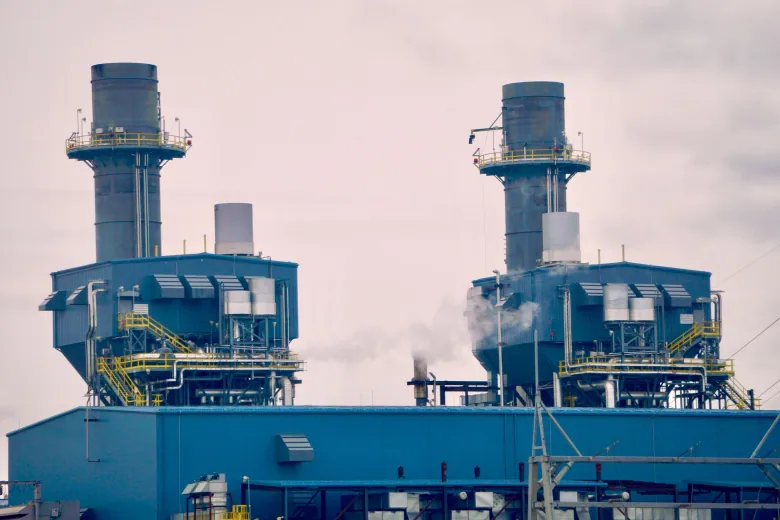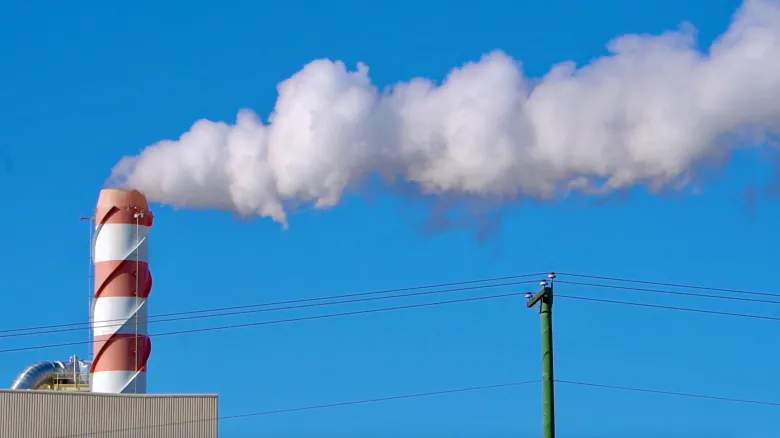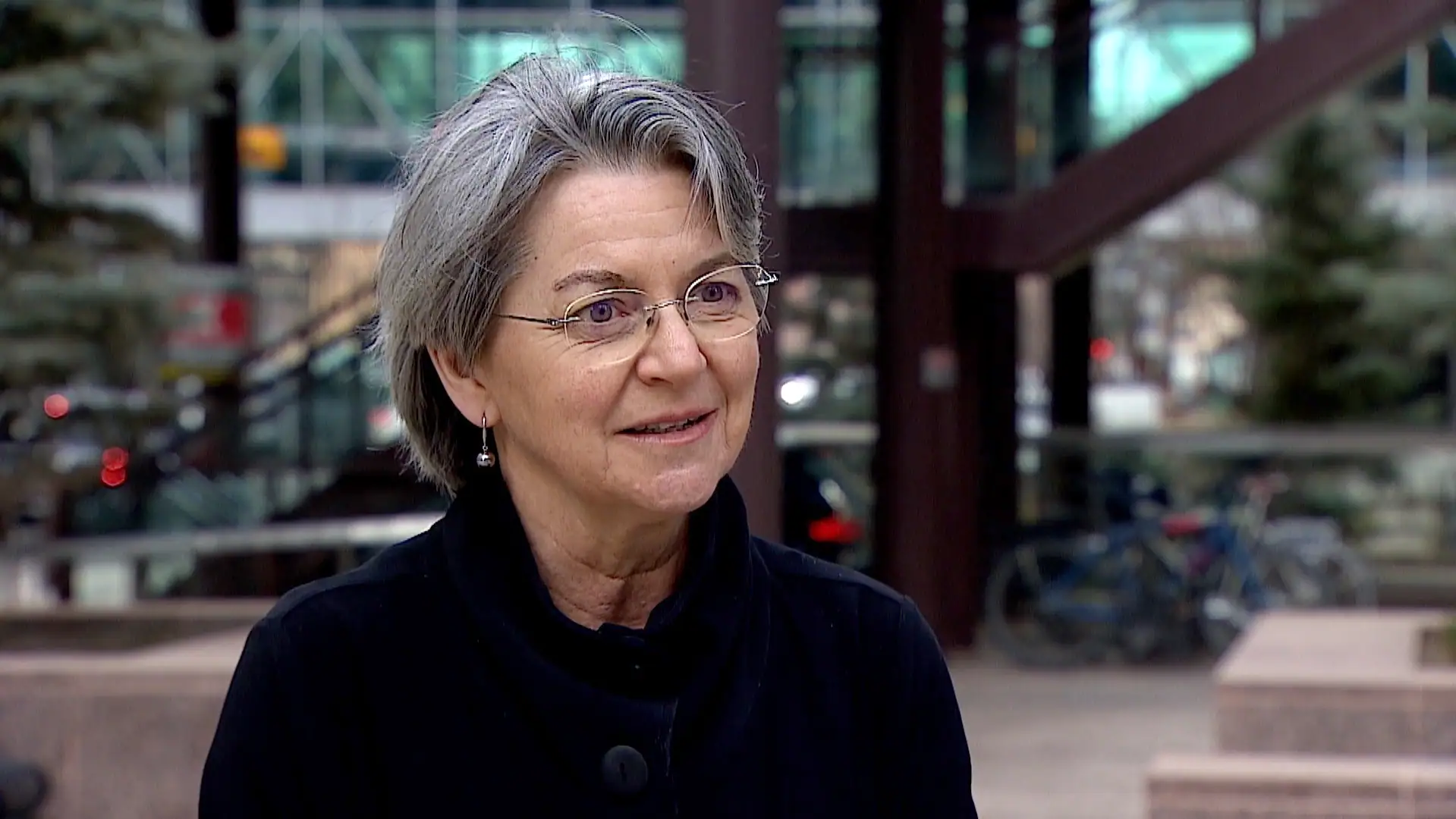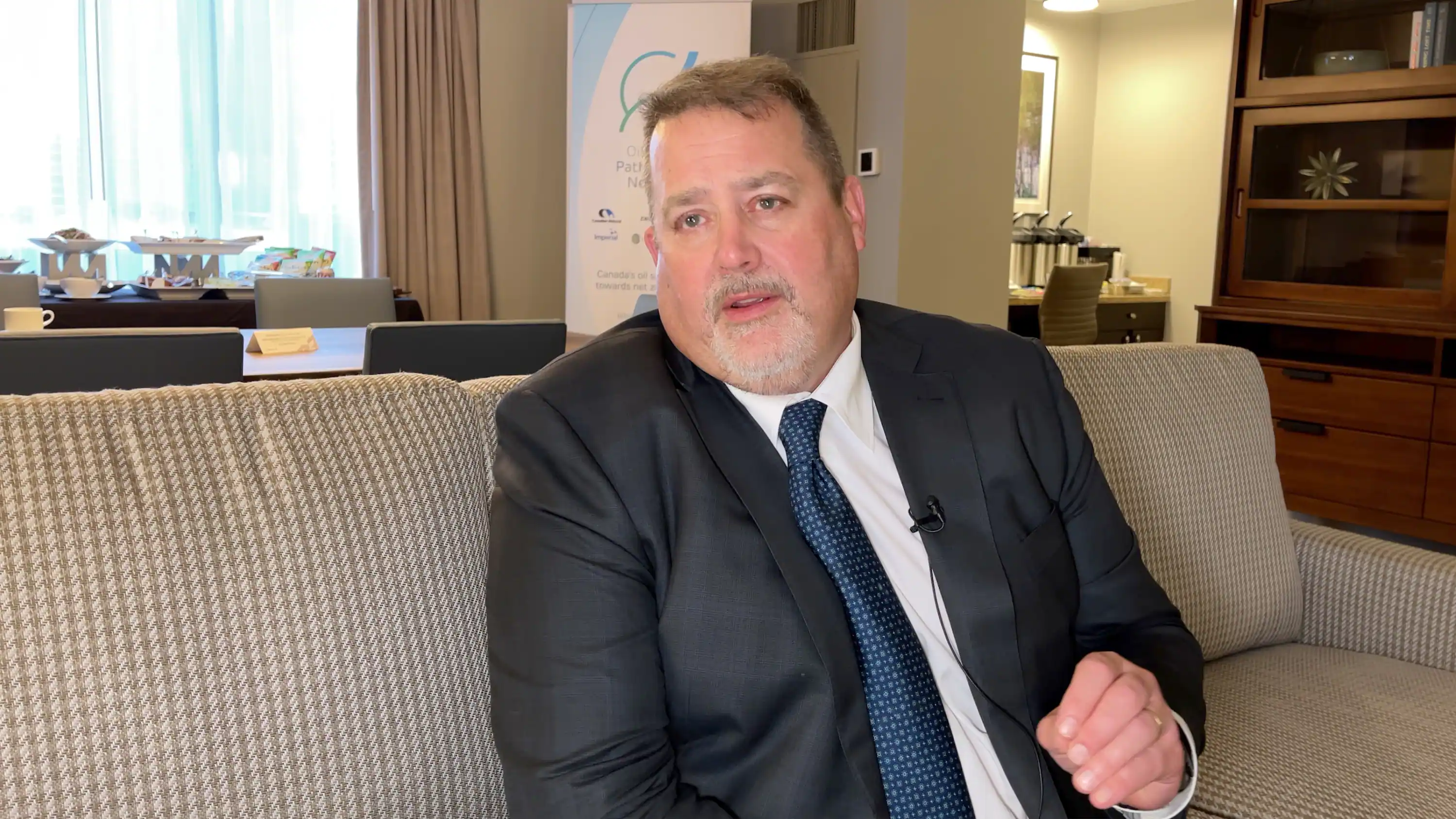Our planet is changing. So is our journalism. This story is part of a CBC News initiative entitled “Our Changing Planet” to show and explain the effects of climate change. Keep up with the latest news on our Climate and Environment page.
It’s a Wednesday morning in June 2021, and executives from the five largest oilsands companies are ready to make their big splash, unveiling an unprecedented collaboration on a project with sky-high ambitions and a price tag in the tens of billions.
The ultimate goal is to tackle the problem that has dogged the sector for decades — its immense carbon emissions.
The competitors in the oil industry are about to lock arms and pledge to wipe out their greenhouse gas emissions by 2050 as part of the Oil Sands Pathways to Net Zero alliance.
The group is made up of Canadian Natural Resources, Cenovus Energy, Imperial Oil, MEG Energy and Suncor Energy. (ConocoPhillips will join a few months later.)
A buzz-generating launch from these companies would help send a clear message to politicians, the public and the investment community in Canada and abroad that the oft-criticized industry in northern Alberta is serious about stamping out its air pollution and finally cleaning up its image.
The day begins according to plan — the announcement is made and journalist interview requests come rolling in.
However, expectations of receiving substantial attention are dashed when TC Energy makes an announcement of its own: the Keystone XL pipeline is dead. The fatal end of the proposed pipeline quickly becomes the only Canadian energy story that anyone talks about that day, and for weeks to come.
For all the optimism and grandeur around Pathways to Net Zero and its potential to change the course of the industry’s future, the unveiling barely made a ripple.
“Nobody paid attention to Pathways,” said Deborah Yedlin, who chronicled the Alberta energy sector’s many ups and downs as a columnist for more than two decades, and is now now the president of the Calgary Chamber of Commerce.
“It has continued to sort of fly under the radar screen — it doesn’t matter whether it’s in the United States, in Canada, or overseas.”
Even many within the industry who work in Calgary’s office towers are unfamiliar with Pathways, beyond its goal of making the oilsands net zero in less than three decades.
Indeed, the rollout plan represents the broader failure of the industry to effectively communicate how it’s going to reduce emissions and navigate a world that’s increasingly focused on climate change.
Bury the emissions
The Pathways plan is divided into three phases, to meet goals for 2030, 2040 and eventually net-zero emissions by 2050. The companies plan to drive down emissions through a variety of techniques, such as using lower-emission sources of energy and electricity such as natural gas, hydrogen and small modular nuclear reactors.
The main weapon to slash emissions is collecting the carbon dioxide from all the oilsands facilities and storing it underground. If built today, the proposed carbon capture and storage (CCS) facility would be the largest in the world, second only to a proposed ExxonMobil project in Houston, Texas.
The initial goal is to capture and sequester 8.5 million tonnes of carbon emissions every year by 2030. The gases would be collected from eight different oilsands facilities in northeastern Alberta, transported south through a pipeline and pumped deep underground in the Cold Lake region, located about 300 km northeast of Edmonton.
The elephant in the room for our industry has been high emissions– Martha Hall Findlay, Suncor
Eventually, more than 20 facilities could be included in the plan and store 40 million tonnes of emissions per year. The oilsands produces about 68 million tonnes of emissions annually.
Considering the oilsands produces about 11 per cent of Canada’s total emissions, if the sector were able to reach net zero by 2050, it would be an extraordinary accomplishment.
“Necessity is the mother of invention and, certainly, this is a really revolutionary step,” said Yedlin.
Still, there are open questions about how much of the Pathways plan is achievable, what is actually motivating the oil companies and whether the sector’s actions match its words.
Second launch
After its spotlight was stolen during the initial launch last year, Pathways tried again last month in Houston at CERAWeek, one of the largest and most influential energy conferences, which brings together government, industry and investment community leaders from around the world.
In addition to a press conference and other events to promote Pathways, the CEOs of Suncor and Cenovus took the main conference stage to discuss their net-zero aspirations. Moderating the talk was Daniel Yergin, one of the world’s foremost energy analysts, a Pulitzer Prize-winning author and the vice chairman of S&P Global.
After an opening discussion about weathering the pandemic, Yergin asked, “What is it?” — demonstrating how little awareness there was of the Pathways project, even within the energy sector, 10 months after it was first announced.
Suncor chief executive Mark Little described how oilsands companies had worked together in the past to develop technology, but that they need to move faster, drive down costs further and collaborate to build infrastructure like carbon dioxide pipelines and CCS-related facilities.
Investors are curious, Little said, whether this plan is actually going to happen, since it could be transformative for the Canadian energy industry.
“Shame on all of us if we can’t figure out how to get this across the goal line,” said Little.
That urgency hasn’t always been there, and within the industry, there are disagreements about how much emphasis there should be on the environment and the climate change.
In the past, the industry has successfully lobbied Ottawa to delay climate regulations.
‘Equivalent of putting a man on the moon’
Pathways is supposed to accelerate environmental performance, but some of the projects have been proposed before.
For instance, Little mentioned how Pathways includes Suncor’s plan to replace its petroleum coke boilers with natural gas at its base plant oilsands facility, located 30 km north of Fort McMurray. Petroleum coke is one of the dirtiest sources of energy and can produce more emissions than burning coal.
Suncor has been working on the $1.4 billion project since 2017, and construction is expected to be completed by the end of 2024. Until then, the company will continue to use petroleum coke.
Sitting on stage with Little was Cenovus chief executive Alex Pourbaix, who explained that reaching net zero won’t be easy.
“Myself and the other CEOs realized that we’re literally trying to solve the equivalent of NASA trying to put a man on the moon,” he said.
Wrapping up the event, Yergin seemed excited about the endeavour and the collaboration among the big oilsands players, remarking, “it is unique in the world.”

Among the other oilsands executives was Suncor’s Martha Hall Findlay, who only joined the industry two years ago, after spending much of her career in politics and public policy. Unlike her colleagues, she speaks differently — much more straightforwardly — about the environmental issues confronting the sector.
“The elephant in the room for our industry has been high emissions,” she said, describing total emissions as a “big per capita number for Canada.”
Oilsands leaders always talk about environmental performance by pointing to the efficiency gains they have made, and how most companies have reduced the amount of emissions tied to producing a barrel of oil. While these gains are important, total emissions are increasingly in the spotlight, especially as Canada tries to meet its climate goals. Total emissions in the oilsands are increasing year after year, as production continues to climb.
While they talk improvements, Hall Findlay often points to the challenge.
“We have to do more than reducing our [emissions] intensity,” she said, telling the crowd Pathways was a necessary “step change.”
After joining Suncor in January 2020 as chief sustainability officer, she recently moved into a newly created position, which she described on stage at the conference.
“I introduce myself and say, ‘Hi, I’m the chief climate officer for an oilsands company. Let that sink in for a minute.'”
WATCH | We’re big emitters and this will take a lot of work, oilsands exec says:
Martha Hall Findlay says oilsands companies are looking at a variety of projects to help drive down emissions. 2:04
Hall Findlay was one of the people who came up with the idea for Pathways, as industry execs discussed how incremental environmental improvements weren’t cutting it.
She’s also open about how there isn’t a clear plan for the last phase of achieving net zero, from 2040 to 2050, as it’s based on some unknowns, such as developing technologies that don’t exist today, or possibly purchasing carbon offsets.
The oilsands has been an economic engine for the national economy, but it’s also the fastest-growing source of emissions.
The Pathways plan bears scrutiny and requires much more detail, the Pembina Institute notes in a report, in part because the net-zero goal relies on technologies that likely won’t be scaleable and affordable until after 2030.
The Calgary-based environmental think-tank questions whether the industry can design, permit and construct the first phase of its proposed CCS facility by the end of the decade. That’s one reason why the report outlines how the oilsands will likely fail to meet climate targets set out by the federal government.
Large team assembled
On the surface, Pathways is little more than a web site and a few staff members, and that likely won’t change for several years, until construction is expected to begin on the first phase of the CCS facility.
In the meantime, a few dozen employees from each member company are seconded to Pathways to begin tackling the engineering and regulatory work required for a project of this size. Currently, they number 120 in total, including scientists, geologists, chemists, physicists and business development experts.
The CEOs have been meeting every Friday morning for the last year and a half, only missing three days during that span because of holidays. The length and focus of the discussions vary from week to week.
WATCH | I don’t think we’re going to replace oil with renewables, oilsands exec says:
Alex Pourbaix sees a bright future for all types of energy as the world’s population grows and energy demand increases. 1:25
Pathways officials estimate it could cost $2.5 billion each year for the next 30 years to fund all of the proposed projects needed to achieve net zero, and that includes the combined cost to industry and government.
Currently, the industry is enjoying record profits and revenue amid the highest oil prices since 2014, after piling up debt in 2020.
Taxpayer expense
Considering the different sizes and types of facilities in the oilsands region, a variety of technologies will likely be used to capture emissions, since companies say the amount of carbon dioxide coming out of a smokestack can range from four to 100 per cent of the gases. The higher the concentration, the lower the cost to capture.
Those expenses will now be shared by the federal government.
The recent budget included a carbon capture tax credit, which includes covering 50 per cent of the cost of equipment used in collecting emissions from industrial facilities.
“I don’t think it’s a subsidy; I wouldn’t call it a subsidy,” said Natural Resources Minister Jonathan Wilkinson before the budget was released. He pointed to how the government is spending money on cutting emissions throughout the economy, such as the electrification of steel-making and lowering the price tag of electric vehicles.
“We actually have to see absolute reductions in emissions,” he said. “We’re willing to partner with the oil and gas space just as we are with other sectors of the economy to make that happen.”
The Pathways group was welcomed the federal support, but this week, Cenovus’ Pourbaix said the tax credit falls short and the industry still needs “more help.”
CCS facilities can be contentious, because the projects aren’t cheap, and some environmental experts say the money could be better spent on renewable energy and other low-carbon projects.

There are concerns the technology actually encourages industries like the oilsands to maintain the status quo, rather than not producing the emissions in the first place. Former federal environment minister Catherine McKenna has voiced her support for such projects in the past, but has recently become more of a critic.
Climate change indifference
There’s also concern about how much pollution will still be created when the oil is actually used.
If the oil is turned into gasoline and diesel for cars and trucks, the majority of the emissions come out of the vehicle’s tailpipe. That means even if the oilsands were able to wipe out their own emissions, all of that oil would still contribute to climate change.
The oil industry has faced criticism for doing too little to tackle emissions, as climate change concerns and warnings grow increasingly dire. At the same time, the world is consuming more oil every year.
“That’s created a lot of tension in Canada as we’ve tried to sort through how is this going to work?” said Little, the chief executive of Suncor, in an interview.
Pathways is focused on cutting emissions, but much of the project and the motivation of the companies behind it is about reputation.
This is an industry looking for a facelift and still trying to shake the “dirty oil” label. That notoriety plagues the sector and has led to financial consequences, as some investors and insurance companies decide they no longer want to do business with the high-carbon oilsands.
Averting the worst effects of climate change should be a natural motivation for this type of project, but it’s rarely discussed. In a 13-page document explaining the Pathways initiative, there is no mention of climate change, other than in the fine print and a reference to Canada’s climate target.
What’s clear is that the companies aren’t considering pulling back on oil production, and instead envision decades of more oil use around the world.
There is some merit to the argument, considering how oil is used in many non-combustible ways, such as in asphalt for roads, a variety of plastics and in many consumer products, from life jackets and toys to pharmaceuticals and lubricants.
There’s also a growing global population, which increases the need for all types of energy.
Still, considering the gradual electrification of not only vehicles but other aspects of the economy and broader efforts by many countries to cut emissions, there is little consensus for what the appetite for oil will be in the future. Since the pandemic, the International Energy Agency has lowered its forecast for oil demand, but still has consumption rising until at least 2026.
Pourbaix, the chief executive of Cenovus, is pretty confident the world’s thirst for it will continue for another lifetime.
“I think we’re going to see the world continuing to consume very large quantities of oil and gas for the next 50, 70 [years], pick a date. What we’re going to see, though, is the decarbonization of the production of those barrels and that is how I think you’re going to see this [energy] transition ultimately play out.”
The aspirations of Pathways should be applauded, considering how much effort will be needed for the oilsands to change course and make deep emission cuts.
But considering the sector’s unwillingness in the past to act on climate change, the enthusiasm now shown by some companies will draw skepticism until the industry can actually make progress on air pollution.
Until then, the sector will only be armed with plans and promises in an attempt to overhaul its murky reputation on climate.
Reference-www.cbc.ca

